What if AI agents were built for people, not just performance? Interview with Pablo Fernández, CEO of ArtinLeap
.avif)

We throw around words like “AI agent” and “automation” like they’ve already arrived. But the truth is, most tools still forget the human in the loop. That’s what makes Pablo Fernández and his startup, artinLeap, stand out.
Pablo isn’t building AI to replace people—he’s building it to work with them. From smaller models that waste less energy to frogs (yes, frogs) as a symbol of transformation, this is a conversation about doing things differently.
And if you’ve ever wondered what a truly people-first approach to AI could look like… this one’s worth your time.
---
Sebastian Ganjali (Hivenet): Could you start with an introduction of yourself? Who is Pablo and what is his background?
Pablo Fernández: I'm Pablo Fernandez, the CEO and founder of artinLeap. ArtinLeap is a startup based in Sophia Antipolis, France, that I started exactly one year ago. We began with business strategy for companies wanting to adopt AI, and also building automation solutions with AI embedded. More recently, we are building a new product called ecitonX, which was the main objective from the start - to build products powered by AI.
My background - I'm a software engineer. I worked in different startups after university, one of them was in artificial intelligence. We developed systems for Microsoft more than 20 years ago when Microsoft launched .NET. They had to migrate all the old code to .NET, and we developed the migrator for them using artificial intelligence. AI is actually old - it's a trend now, but it's very old.
After that experience, I worked for Intel in California, then moved to France to work in the biggest travel industry company called Amadeus. Later I moved to Symphony, which is the fintech company that was actually founded by the CEO of Hivenet and where I spent five years. During those years, I was very oriented toward quality engineering, and I also supported Hivenet in their AI transformation and quality transformation at the beginning. And here I am now as the founder of this startup in France.
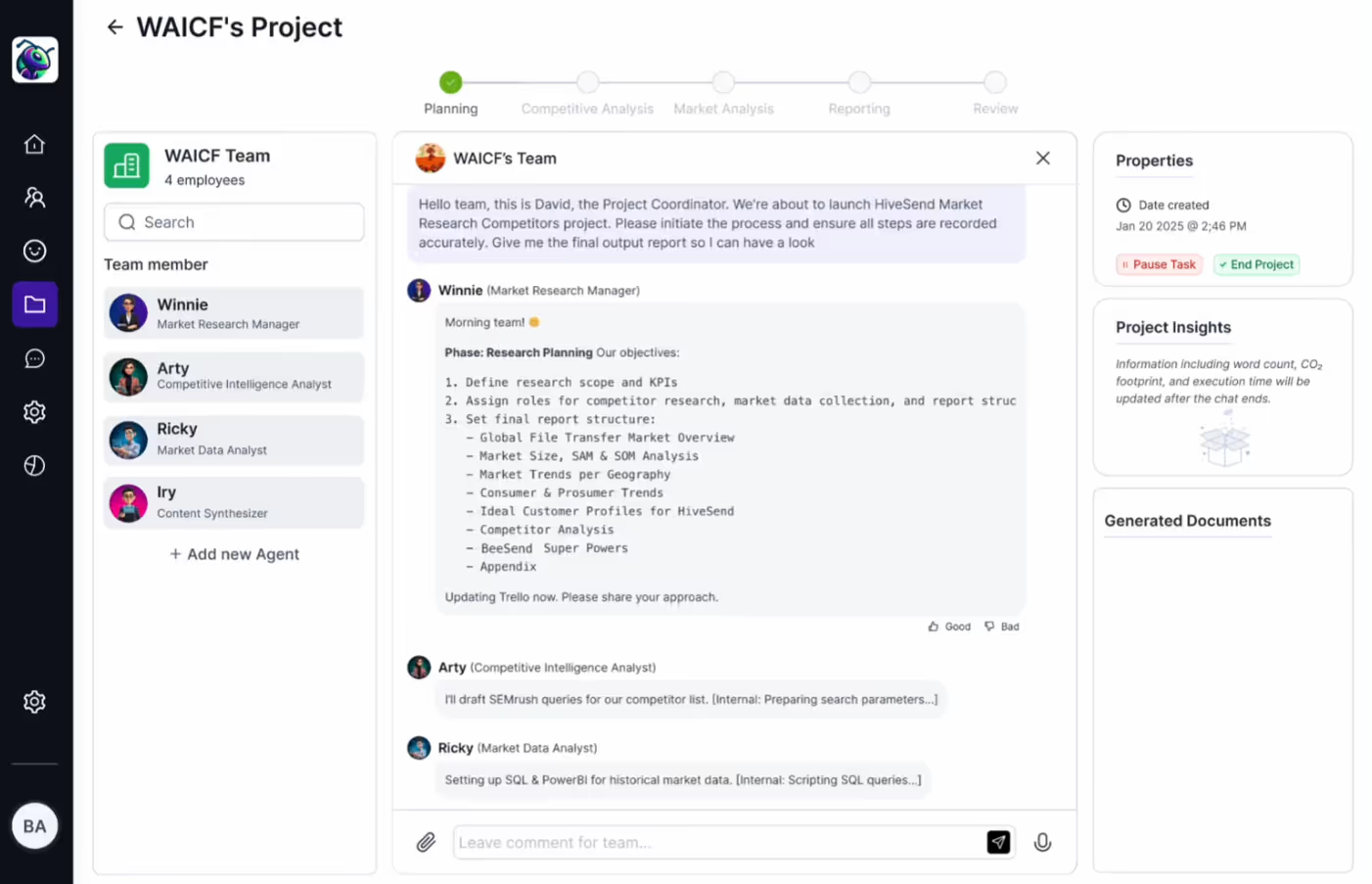
The journey to founding artinLeap
Sebastian: When did you decide it was time to go on your own and start your own AI-powered platform or tool?
Pablo: My first job in AI was a source of inspiration. I remember I learned a lot and was passionate about the topic. But at that time, AI was more for big companies or universities - it wasn't that accessible. Finding a job in AI was tough.
I kept that dream in my mind for a few years while I learned about software engineering, architecture, cloud, quality, even video game development. During the last two or three years, with the democratization of AI thanks to ChatGPT, OpenAI, and all this innovation, I found it was a good moment for me. I had a good background and had already learned a lot working for startups, unicorns, and corporations, so it was a good moment to quit my comfort zone and do something for myself. When you're working in a company, that's nice also because you have a salary coming in, so you don't want to get out of this comfort zone. But this dream came back, and I wanted to make it a reality, so that's why I started artinLeap.
Sebastian: Why did you launch artinLeap as a concept? How did you arrive at the conclusion that this was what you were going to start as your startup?
Pablo: The concept behind artinLeap stands for "Artificial Intelligence Leap." There's a lot of analysis not only in the name but also in the logo. Artificial Intelligence Leap is really linked to digital transformation - how to help companies make this leap in digital transformation with the help of AI.
Our logo is a frog. The frog is a symbol of transformation and adaptability, which is part of our objectives - to help companies transform and adapt. The logo is also linked to nature because one of the pillars of my company is to be sustainable, to provide solutions that have a low footprint for the planet.
It's not only about technology, it's also about being green. And it's not just greenwashing - I really mean it from the beginning. We have to be a green technology.
After defining this idea, we had to implement it. For the sustainability part, it's about what we build. For example, if we're using Large Language Models (LLMs), we prefer to use Smaller Language Models (SLMs) when possible because they consume less energy and data.
Another aspect is infrastructure - I was looking for green cloud providers that were really green, not only in energy sources but also in their approach. That's how I found Hivenet.
The third approach is how to mitigate our impact, because we always have an impact when we use technology, no matter how green we try to be. To compensate a little bit, we are supporting an organization called "Save the Frogs" in California that helps with education and protection of frogs worldwide.
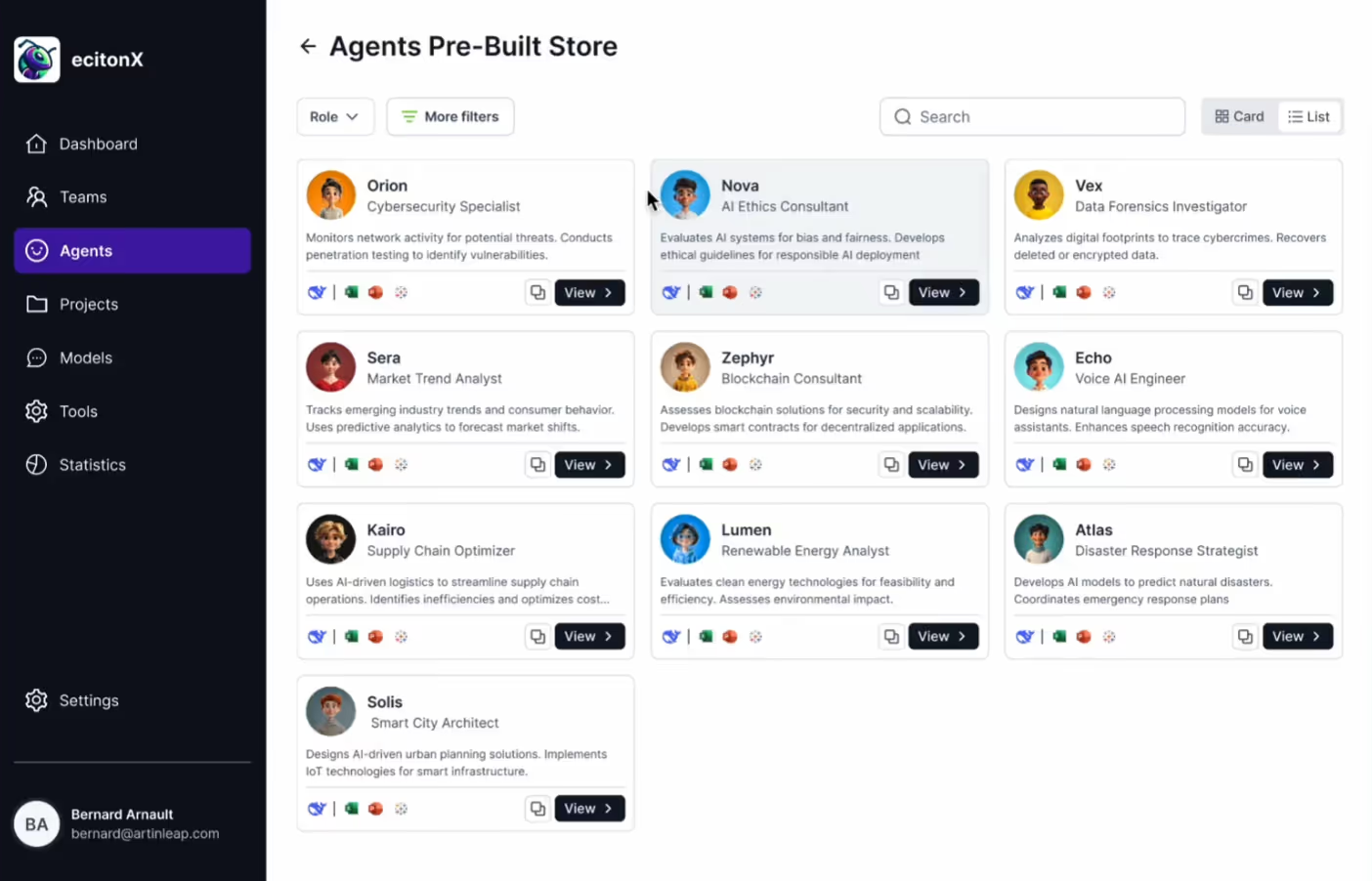
Services and solutions
Sebastian: If you could break down what artinLeap does, how would you explain it to someone who's not an AI wizard?
Pablo: We have six types of services:
First is Augmented Data Insights. In companies, you probably have a lot of data in what we call data lakes, and usually this data is not structured or easy to understand. We understand this data with AI and produce something that is easy for humans to read, like dashboards, charts, or even a chatbot that extracts this data and makes it more meaningful.
Second is Agentic solutions. In 2025, we're talking about AI agents everywhere. We're building a multi-agent platform where these agents will be like small virtual assistants. They're very intelligent because they use AI, and they learn from you, from the company, from your experience, and become experts in specific domains.
Third is Intelligent Automation. Usually in companies, you always have bottlenecks in processes. We find these bottlenecks and ask: how can we improve it? Is it possible to automate? Is it possible to include AI in this automation to go faster?
Fourth is Conversational AI with chatbots. Chatbots usually have a bad reputation because some years ago they weren't very smart. This is still the case on many websites - you ask a question and don't get the response you expect. But now with LLMs, they're becoming really good. We're building chatbots not only using LLMs but also RAG (Retrieval Augmented Generation), like the one we built for Hivenet.
Fifth is AI Strategy and Consulting, which is linked to digital transformation, helping companies in that journey.
Lastly, we provide AI Education - trainings for schools, business schools, or companies to know how to adapt their business strategy to use AI and be more efficient.
This year, our focus is really on agentic solutions - building this multi-agent system.
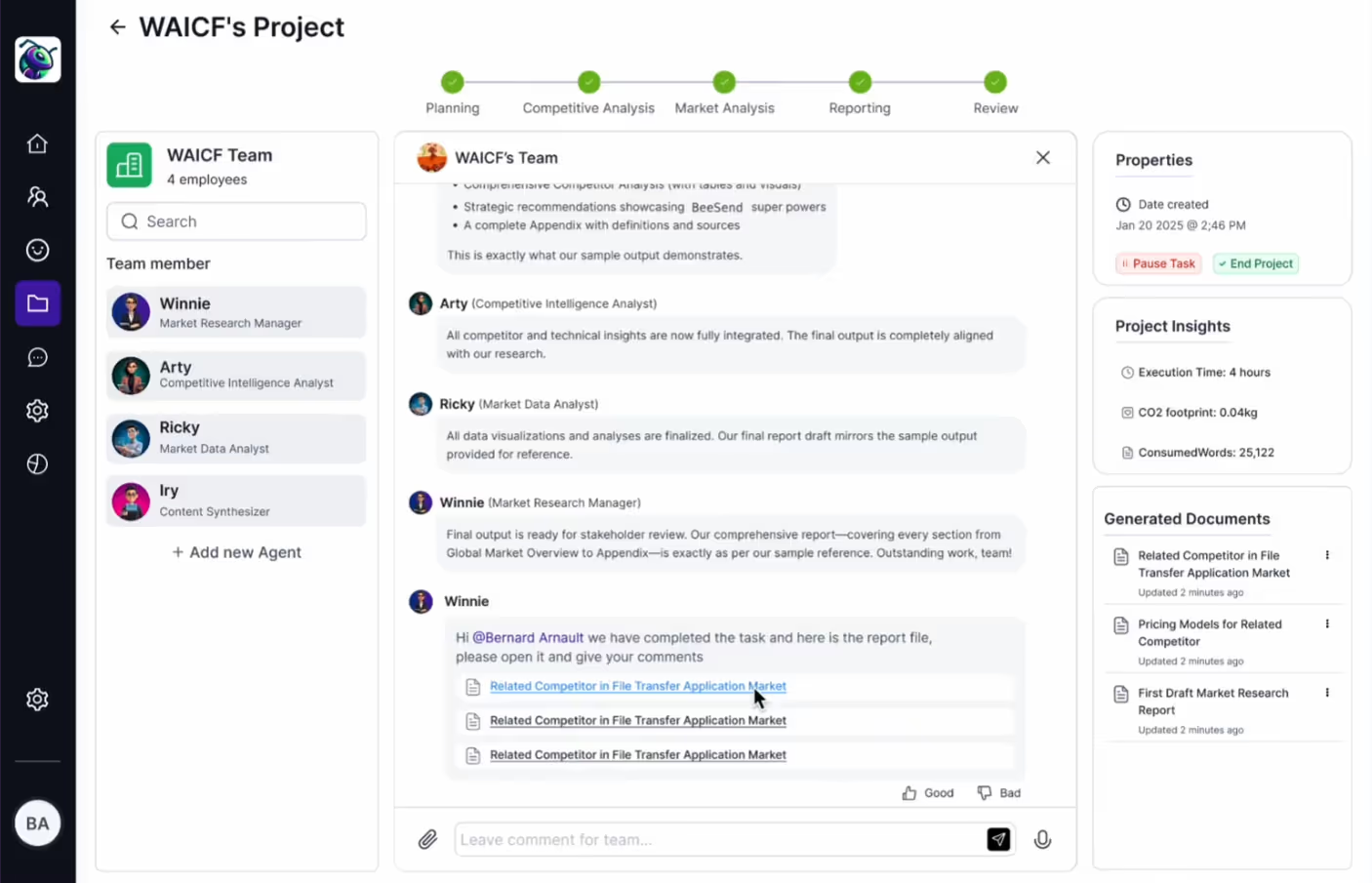
Competitive landscape and differentiation
Sebastian: What findings have you made regarding your journey with building, and what have you found that makes your product different compared to other AI agent competitors? What are they lacking?
Pablo: That's a very interesting question. If you go to an AI event or technology event, maybe 70-80% of the stands are talking about agents. How can you compete against all of them? How can you be unique? It's difficult.
When I went to the AI summit in Paris, I was in that situation - I'm building agents, but all these other companies are also doing agents. So what do I have that they don't have, or what is missing here?
I explored all of them, and one of the gaps I found is that there's no communication between them. One company is doing their agents, another is doing their own agents, but they aren't able to talk to each other.
So that's one of the things I want to do - build a global network of AI agents. I will develop my own specialized agents, of course, but we're also going to have a communication protocol and a marketplace to enable communication between all of them. That's our uniqueness, and that's what we're building at the moment.
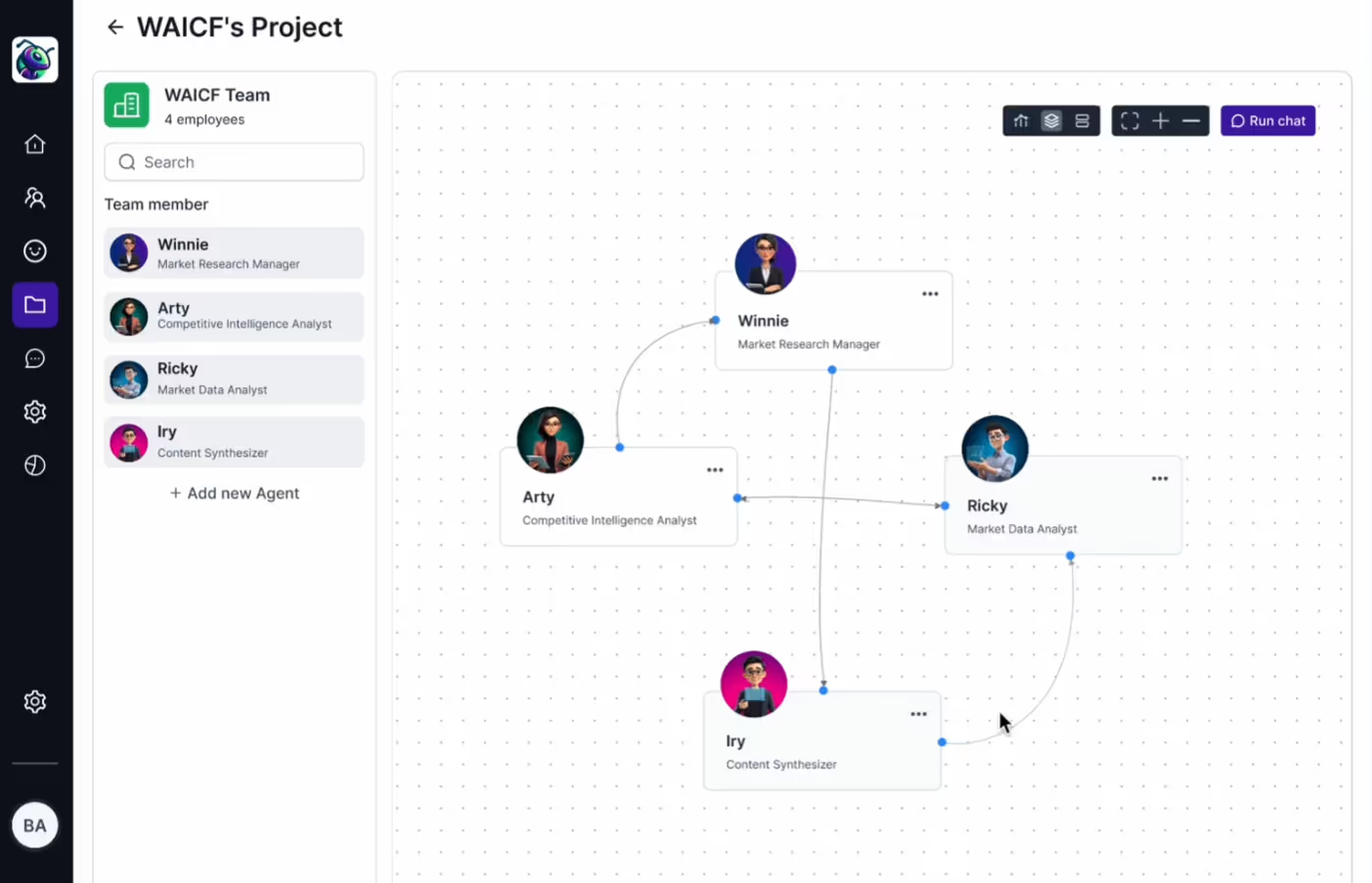
Latest developments
Sebastian: Can you tell me what's the latest from artinLeap right now? What's the latest development or upcoming update?
Pablo: Our product is called “ecitonX”, and Eciton is the scientific name of the army ant. The concept behind it is that we're able to improve the collective intelligence of a company when you have AI and humans working together in synergy.
We're building with the human in the loop. There are many important elements. First is energy optimization because we're using SLMs and infrastructure that is green and consumes less energy. It's also secure because it's highly encrypted.
The goal is to empower humans, not replace them. That's also what makes a big difference compared to other agents, because most of them don't have the human in the loop. Their purpose is to replace humans. But collective intelligence isn't that good if the efficiency of what you're building depends 100% on an LLM, which is very limited in terms of creativity or the ethical aspects - like making decisions where people's lives might be at stake.
We're currently in the alpha release, and we plan to have the MVP in June, which will be showcased at Viva Technology in Paris this summer.
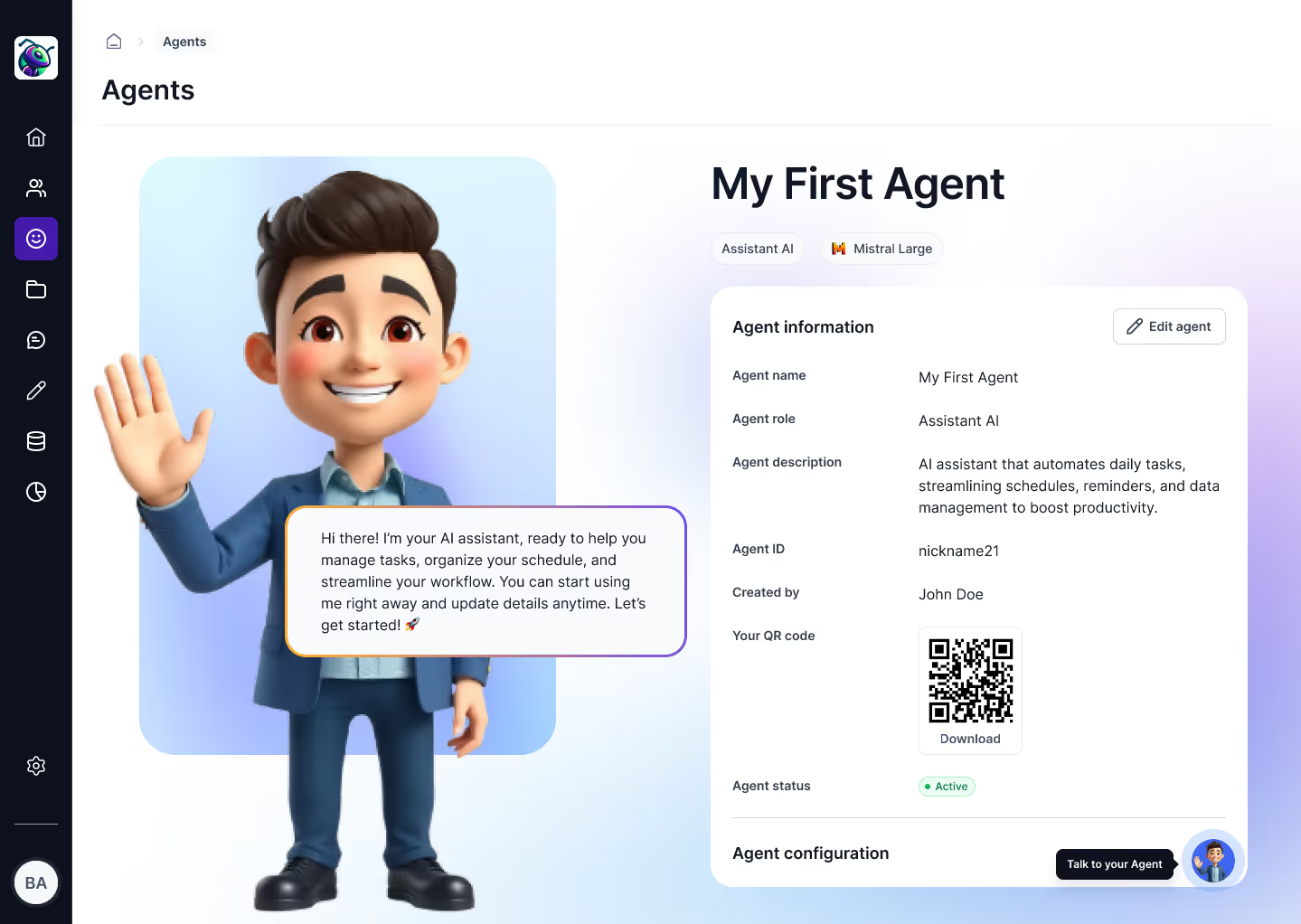
The future of AI
Sebastian: What are you most looking forward to in the field of AI in the next few years? What are you hoping it's going to achieve for yourself or your life?
Pablo: I think we're at the beginning of a tsunami in AI. We're already seeing the first part, but I think the things that will come will be huge and too fast. For example, today you have new models every day, new technologies every day - it's impossible to stay up to date.
But I think at a certain point, all this will be more focused on good things for humans. I hope so. I see, for example, AI assisting people with health problems, age-related issues, or disabilities - that would be nice.
I think robotics will be very interesting in the coming years - personal assistants in robotics, but also virtual personal assistants not necessarily in robotics. You'll be able to talk to your assistant, and your assistant will be able to execute many things for you on your behalf. That will give us more time to focus on what's important.
And I hope we use it for good - AI for good. We now have the biggest jump in technology in human history, and we also have important problems to fix related to health, war, peace, and poverty. So why not use AI to address these issues?
Using Compute with Hivenet
Sebastian: When it comes to using Compute with Hivenet for your startup and artinLeap, how have you been utilizing the platform to assist you in building your platform?
Pablo: We were very privileged because we were there from the very beginning. We joined the Joint Development Program, so we were not only using the solution but also part of the solution. From the very beginning, we were giving feedback about the usage of Compute, and we're using it today.
We presented our agent prototype on Compute. As I mentioned, we're using SLMs or LLMs, and we're able to select the instance size. One of the biggest problems for companies today is overprovisioning, which is super expensive, especially for GPUs in the cloud. But thanks to the feature where you're able to select an extra small instance, a small one, a medium, or a large, we can pick only the one that we need.
For example, if I want to use an SLM, I'll pick an extra small instance. That's good not only for the planet but also for my pocket because we're not overspending or overprovisioning. That's one of the things I like a lot - it's very energy efficient.
Another thing I like is the decentralized cloud. We have a part that's related to storage, and with a decentralized cloud, the files are very well protected. That's something customers today are asking for a lot. They don't like having all their data in a single place, especially now with international conflicts. Some companies say, "I don't want my data in Asia or the US; I want a French or European solution." So that helps as well.
It's mainly that and the frugality - being able to use resources in a more efficient way. That's how we're using it to host our agents. It also allows us to do distributed inference because it's a distributed cloud. For AI, we had to do some research about how to do distributed inference, and that was possible with Compute.
---
There’s something refreshing about hearing someone talk about AI and not immediately jump to disruption or domination. Pablo’s building for collaboration—for a future where machines don’t replace us, they help us do more of what matters.
And that’s what Compute with Hivenet is really about. It’s not just access to powerful infrastructure—it’s flexibility, sustainability, and the ability to scale your ideas without burning your budget or the planet. Whether you’re running smaller models like Pablo or experimenting with agents of your own, Compute gives you the freedom to choose what works for your tech and your values.
If you're building something that deserves better than the usual cloud, we're here. And we’re building it with you.